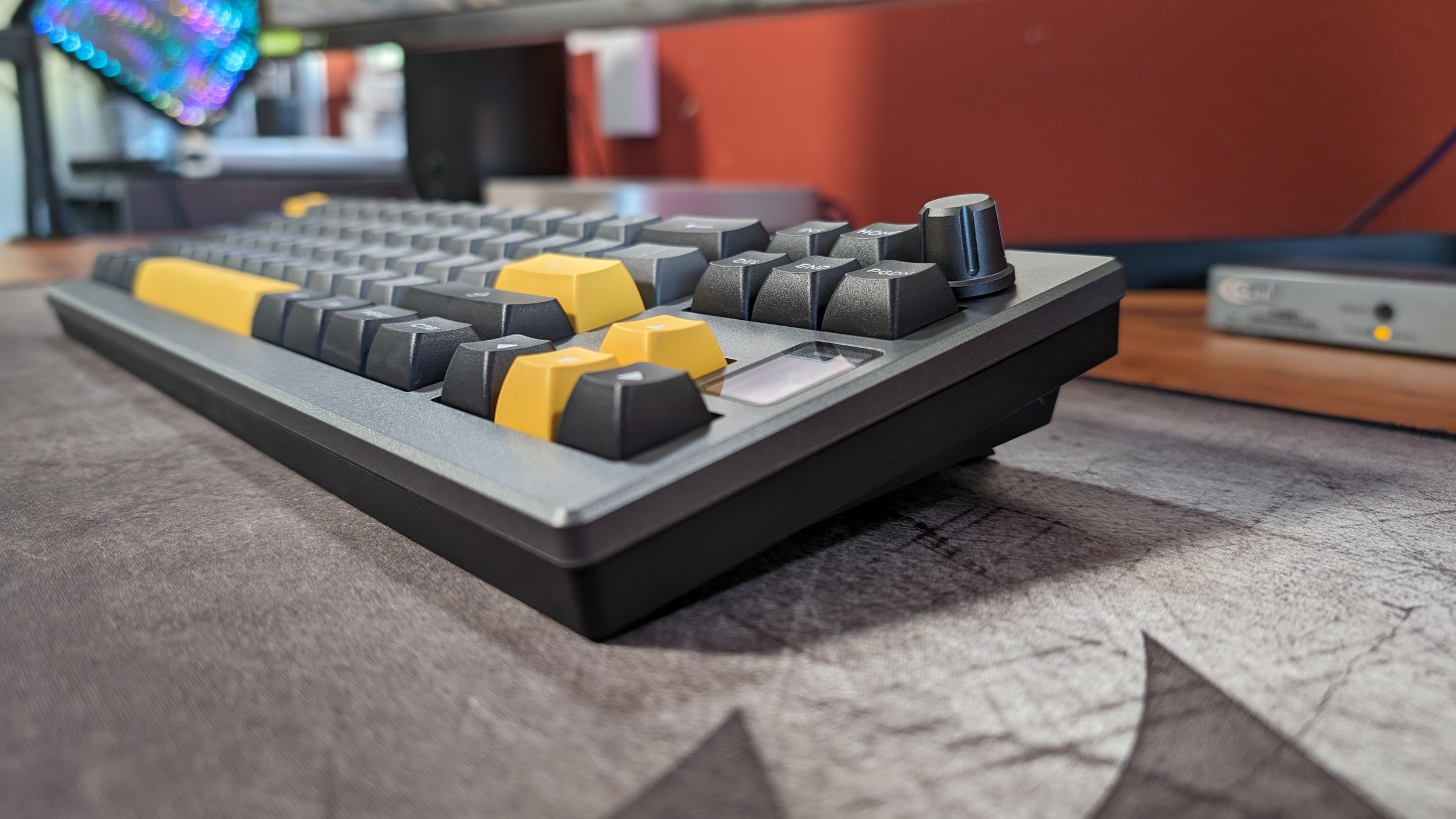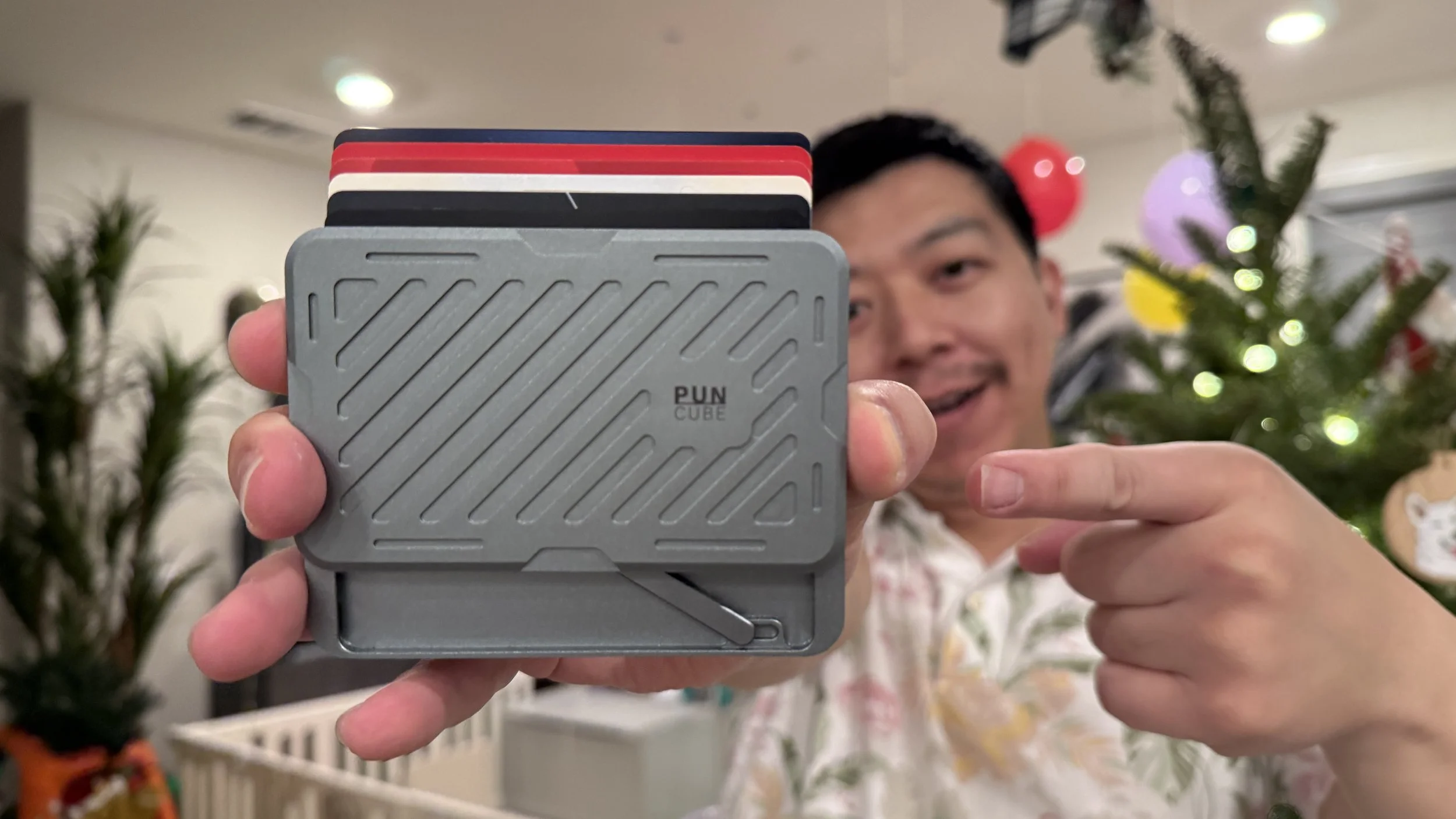Epomaker Shadow-X Mechanical Keyboard Review: Display Whatever You Want!
Retail Price: $85.99
We are a participant in the Amazon Services LLC Associates Program, an affiliate advertising program designed to provide a means for us to earn fees and support our channel by linking to Amazon.com and affiliated sites.
Disclaimer: Epomaker sent us a unit of the Shadow-X free of charge to review, but all thoughts and opinions expressed in this review are our own and were not discussed with the company prior to publishing. Click here to learn more about Epomaker.
With a product name like Shadow-X, whatever it is better be one really cool device. For the most part, the Epomaker Shadow-X has that slick factor thanks to a Batman-esque costume color scheme and a subjectively hip vibe exuding from this wireless form factor. There are some additional functionality features here that make the keyboard stand out and yet also some head scratching design decisions. Is this a compact keyboard that brings out that cool factor all the while providing the right tech to give you a great typing experience? Let’s find out.
Build Quality
As a wireless Bluetooth keyboard, the Shadow-X has a lot of flexibility going for it in terms of its design. The entire frame, face, and rear panels are made from plastic. The top has a shimmery silver coating of paint that has a slightly different feel to it than the rear black panel. Epomaker did a terrific job using these darker shades and materials to keep fingerprints out of sight from the user. I don’t see any fingerprints on any part of this keyboard. That also extends to the double shot PBT keycaps. My sweaty fingers don’t leave visible marks on the keycaps and the unit just looks clean all the time. The bottom panel is supported by four rubber feet and two adjustable tilt legs that can bring the keyboard up to two heights. I actually didn’t really feel that the different heights offered that significant of a typing difference.
From a design standpoint, I appreciate how unified the ports are here on the Shadow-X. The USB-C charging slot is centered right above the USB receiver storage. They’re stacked on the bottom panel and just helps make the board look symmetrical. There are three ways to use this keyboard: the main one being through Bluetooth 5.0 signal, then through a 2.4 GHz USB receiver, and of course a USB-C cable. All three connection methods seem to hold a stable connection with my devices and I haven’t come across any situations where my signal dropped. Like a lot of Bluetooth keyboards on the market, it does take a second for the keyboard to reconnect when waking from sleep.
5 Devices At Once
It’s a plastic knob, but the clicks that it makes are distinctive and quite satisfying. Many people, including myself, will most likely first see this and assume it’s a volume controller for your computer. It is not.
On the very top right of the keyboard layout contains a knob switch. You can toggle it through five notches. It’s a plastic knob, but the clicks that it makes are distinctive and quite satisfying. Many people, including myself, will most likely first see this and assume it’s a volume controller for your computer. It is not. This knob actually toggles through the keyboard's current connection modes. The first notch is for the USB-C connection, the second is for the wireless receiver, and the next three are slotted for Bluetooth connections for three devices. Theoretically, you can operate up to 5 devices through just the Shadow-X alone. I honestly am a little baffled at why a knob dedicated to connection toggling would have higher importance than having that real estate dedicated to adjusting volume. I get that Epomaker wanted to keep the design clean and not add additional buttons onto the forehead of the keyboard, but I personally would have preferred the connection toggling to be used through FN secondary commands and dedicating that knob to volume instead. I get trying different designs as Epomaker makes a wide assortment of keyboards with a volume knob, so if you value switching between devices with one keyboard quickly, this one might be on the top of your list.
70% Layout
Gateron Pro Yellow Switches
I enjoyed typing on the Shadow-X. For a 70% keyboard, I found it to be well spaced out and friendly with how it presents information to you. An LED indicator separates the main layout from the Insert cluster. This shows which form of connection you’re currently in. That probably could have been better suited built into the knob that controls those functions, but regardless, I like how the current location of the indicators help separate the typing flow. I have not accidentally hit the delete or insert key while aiming for the backspace on the Shadow-X. I do that a lot on some other compact keyboards this size.
Typing in general is quite a nice experience here. With Gateron Pro Yellow switches attached to my Shadow-X, this gasket-mounted mechanism is reluctantly smooth. I say reluctantly, because I actually find the sound coming off the board to be rather thumpy akin to something that should be more loud. Instead, there is a suppressed volume as well as less spring in the recoil after your fingers leave the keys. I wouldn’t say this is extremely quiet, but I do surmise it will please mechanical keyboard owners who want to hear the clickiness of a mechanical board while still maintaining a certain peace and quiet around the desk space. Once again, I say this in just about every mechanical keyboard review, but if you don’t like the sound of whatever configuration you purchase by default, this Epomaker board is hot-swappable that supports both 3 and 5 pin mechanical switches. You can modify it however you want to.
I’m able to type relatively quickly and without much error when the keyboard gets going. I say when the keyboard gets going because I did find that the Shadow-X would have some latency issues for a handful of inputs after first waking up from sleep. It takes a second or two to turn back on, but occasionally after typing a few letters, it would lag off a key.
A Display To Display
Running Pikachu Gif on the Shadow-X
Epomaker also chose to go with a south-facing LED positioning on the keys. I’m a fan of seeing the RGB colors from my line of sight as a typer, so south-facing LED keys are enjoyable for my tastes. Epomaker says there are 16.8 million RGB backlight combinations available as the keyboard has one unique feature that lots of other boards don’t, a dedicated display. We’ll get back to the colors in a minute as the little screen is fully colored to provide all the information you need regarding the keyboard’s data. You have the time, the date, a battery life percentage indicator, and of course another indicator to show you which connection you’re using with a device. You can toggle through two more screens after that status menu. One of them is to control the RGB settings while the last one is a clipart that can fill the RGB screen. It’s a cute concept that is a bit finicky as it relies on Epomaker’s Driver computer software.
The short story is that the computer software you download to manage the keyboard and the RGB’s aren’t all that enticing. They don’t work right a majority of the time. While the RGB aspect is better, I still think it lags behind a lot of the competition out there. The Sketchpad Mode and picture downloading tools are neat to envision on a keyboard, but the execution makes the vision nearly impossible. If even I struggled to implement it through Epomaker’s clunky software, I think a majority of mass consumers will as well.
While we are talking about sour notes, I also had some trouble charging the 3,000 mAh battery on the Shadow-X. It usually lasts about a week off a full charge with average daily usage. I think the battery life is acceptable, but where my issues cropped up is when I would plug the USB cable to power. It looks like the keyboard is charging but when I remove it hours later when it should be done, the battery indicator tells me that nothing has changed. I initially thought that it might be a software bug and that the display panel just wasn’t calibrated or merely not updating. That theory was wrong as the keyboard ended up dying shortly after. After replugging it in a few attempts, it charged up to 100%. This happened multiple times during my testing period.
Final Thoughts
These issues might be correlated with my review unit batch as I’ve seen other connectivity issues with one of the other boards from the batch that Epomaker sent us to look at it. Regardless of the software kinks and potentially even quality control issues, the Epomaker Shadow-X mechanical keyboard offers a well rounded experience with a few abnormal functionalities that enthusiasts could be excited to tinker with. Customization is the name of the game in this field and being able to upload or create your own custom logo and have it displayed on your keyboard holds a lot of value to a lot of consumers who are meticulously looking to perfect their setup look. The Shadow-X is worth a look especially as it doesn’t break the bank to acquire one.














Alex
With nearly a decade under his belt running his video production team, and countless hours traveling the country to report on pop culture events during his tenure as a contributor for AXS Examiner, Alex has relied on a lot of gadgets over the years. That still hasn’t satiated his need to get his hands on the newest and greatest the world has to offer!